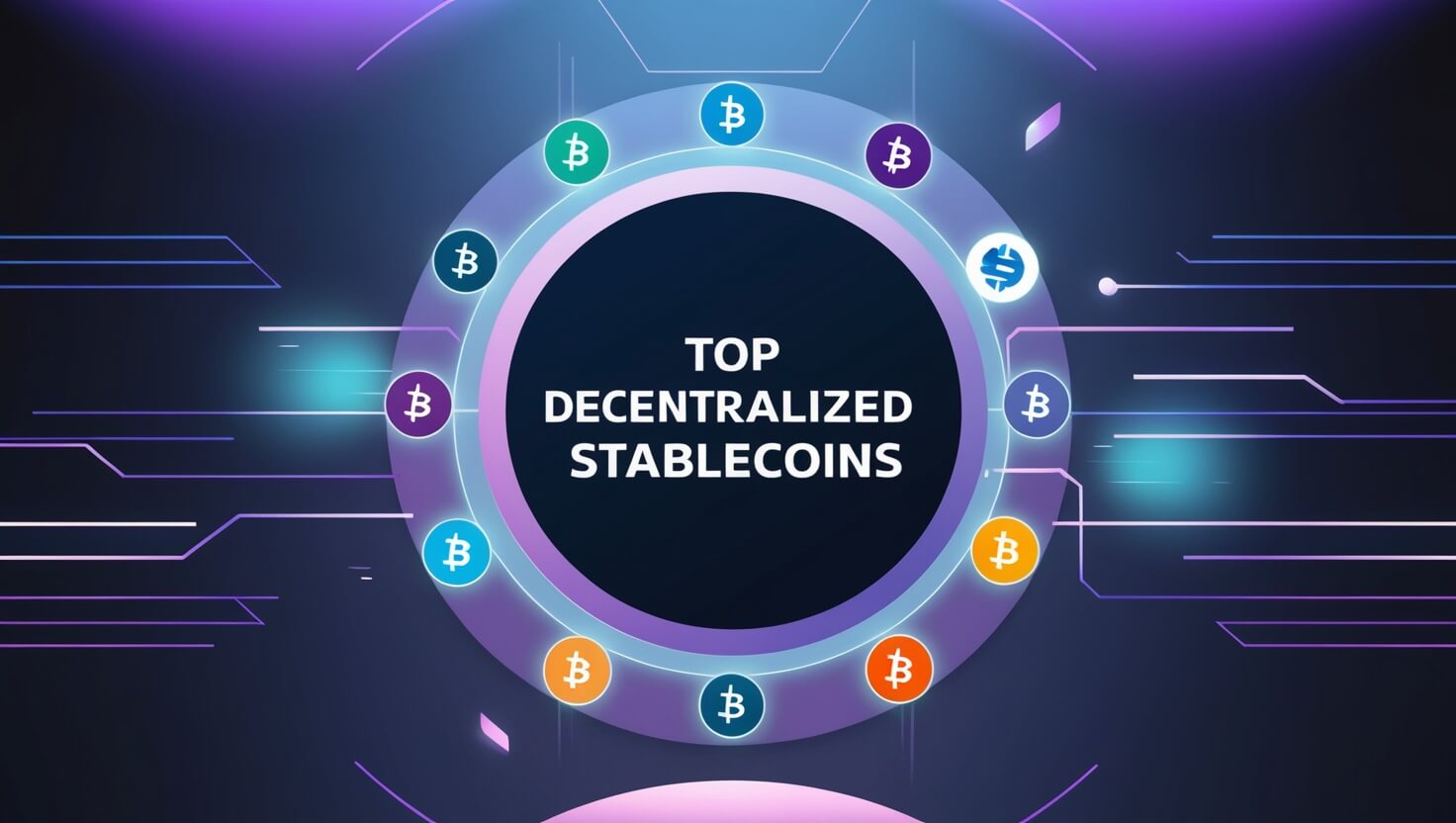In this article, I will cover the Top Decentralized Stablecoins, noting how these stablecoins maintain steady value without a central authority.
Relying on crypto-backed reserves, algorithmic systems, or sophisticated models, these stablecoins achieve the maintenance of their value.
They are critical to decentralized finance because they facilitate secure, transparent, and non-custodial transactions, lending, and trading in the blockchain ecosystem.
Key Features & Top Decentralized Stablecoins
| Stablecoin | Key Features |
|---|---|
| DAI | Most widely used decentralized stablecoin |
| FRAX | Hybrid model combining collateral & algorithmic stabilization |
| USDD | Tron’s decentralized stablecoin |
| MIM | Backed by yield-bearing crypto assets |
| alUSD | Self-repaying stablecoin from Alchemix |
| sUSD | Decentralized synthetic USD stablecoin |
| USTC | Formerly TerraUSD, now unstable post-collapse |
| USDN | Waves-based stablecoin (depegged multiple times) |
| RAI | Non-pegged stable asset, backed only by ETH |
1. DAI (MakerDAO)
DAI is one of the most used decentralized stablecoins and is backed by crypto collateral such as ETH, USDC, and other assets. The MakerDAO protocol maintains it.
Price stability is achieved through overcollateralization and governance-controlled stability fees.
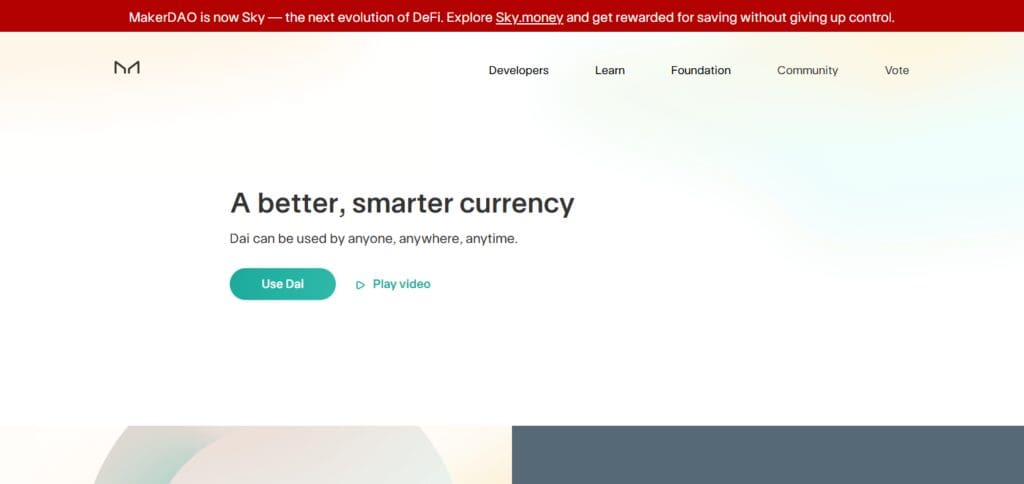
Users mint DAI by locking assets in Maker Vaults, providing a decentralized and censorship-resistant system.
DAI’s transparency and reliability solidifies it as a leading choice for DeFi applications.
DAI (MakerDAO)
- Peg: 1 USD
- Collateral: Crypto-backed (ETH, wBTC, etc.)
- Mechanism: Overcollateralized loans via the Maker Protocol.
- Blockchain: Ethereum (multi-chain availability).
- Key Feature: Decentralized governance and robust stability mechanisms.
2. FRAX (Frax Finance)
FRAX is a hybrid stablecoin that blends algorithmic and collateralized frameworks together to maintain stability. Originally launched with a partially algorithmic model, it now uses USDC and other stable assets as collateral.
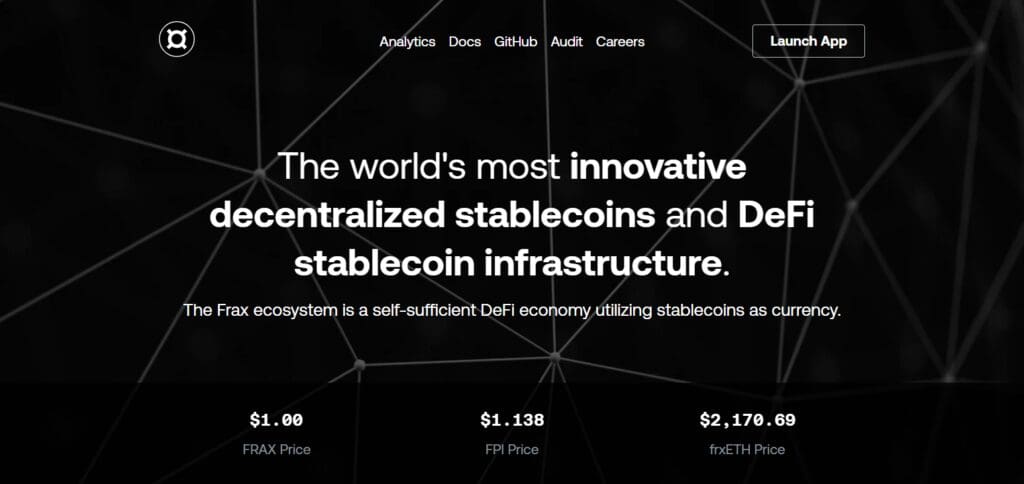
Frax Finance governs its supply dynamically, adjusting collateral ratios based on market conditions.
This model allows for increased scale, while reducing reliance on full collateralization, making FRAX a unique and efficient decentralized stablecoin.
FRAX (Frax Finance)
- Peg: 1 USD
- Collateral: Hybrid model (partly algorithmic, partly collateralized).
- Mechanism: Uses a fractional-algorithmic system to maintain stability.
- Blockchain: Ethereum (multi-chain availability).
- Key Feature: Scalable and capital-efficient stablecoin design.
3. USDD (Tron DAO)
A blend of TRX, BTC, and USDT reserves back USDD, the algorithmic stablecoin from Tron DAO.
In contrast to purely algorithmic stablecoins, USDD reinforces its peg with collateralized reserves and an arbitrage system.
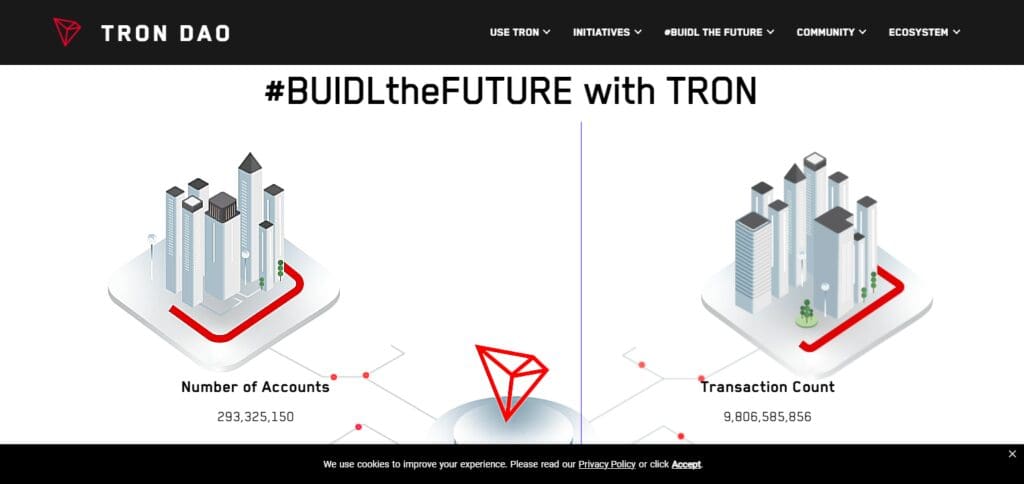
While marketed as decentralized, dependency on centralized assets is concerning.
Regardless of this, USDD is still a fundamental element of the Tron ecosystem, serving DeFi systems and transactions.
LUSD (Liquity Protocol)
- Peg: 1 USD
- Collateral: ETH-backed.
- Mechanism: Overcollateralized loans with no interest rates.
- Blockchain: Ethereum.
- Key Feature: Minimal governance and high decentralization.
4. MIM (Magic Internet Money)
Magic Internet Money (MIM) is a stablecoin created by Abracadabra Money that is backed by interest-yielding assets such as yvDAI, yvUSDT, and yvUSDC.
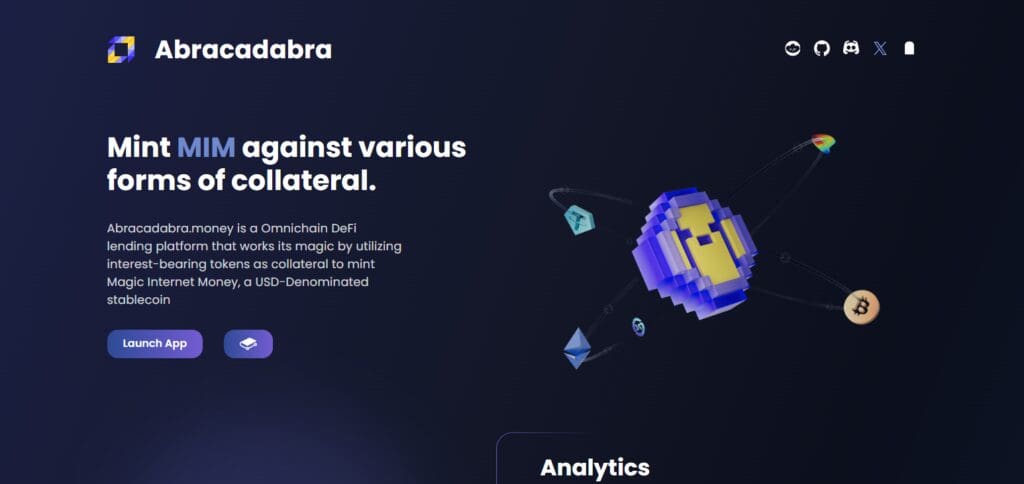
Customers can obtain MIM by putting up these assets as collateral, which makes it distinctive in its use of self-repaying loans through DeFi yield emplementation.
MIM is prominently used across numerous chains, serving as both collateral and liquidity to DeFi lending and borrowing systems.
MIM (Magic Internet Money)
- Peg: 1 USD
- Collateral: Crypto-backed (various assets).
- Mechanism: Overcollateralized loans via the Abracadabra.money platform.
- Blockchain: Ethereum (multi-chain availability).
- Key Feature: Flexible collateral options and yield-generating strategies.
5.alUSD (Alchemix)
Alchemix USD (alUSD) is a self-repaying stablecoin developed by Alchemix Finance. It is collateralized by yield-bearing assets, meaning that loans are paid off over time without manual repayment.
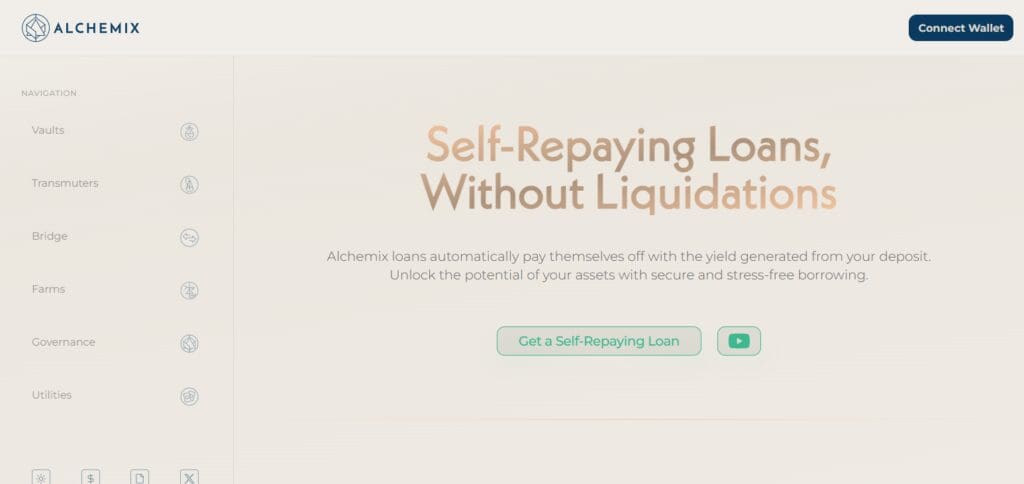
Borrowers put assets such as DAI into Alchemix vaults, with yield farming strategies actively repaying the borrowed alUSD.
This system increases repayment opportunities without raising liquidation risks for users because of the flexible borrowing with DeFi.
alUSD (Alchemix)
- Peg: 1 USD
- Collateral: Crypto-backed (e.g., DAI, ETH).
- Mechanism: Self-repaying loans backed by yield-generating collateral.
- Blockchain: Ethereum.
- Key Feature: Unique self-repaying loan mechanism.
6.sUSD (Synthetix)
A synthetic stablecoin issued by Synthetix, sUSD enables users to access the value of the USD without actually needing fiat reserves, and is therefore backed by SNX tokens and secured through overcollateralization.
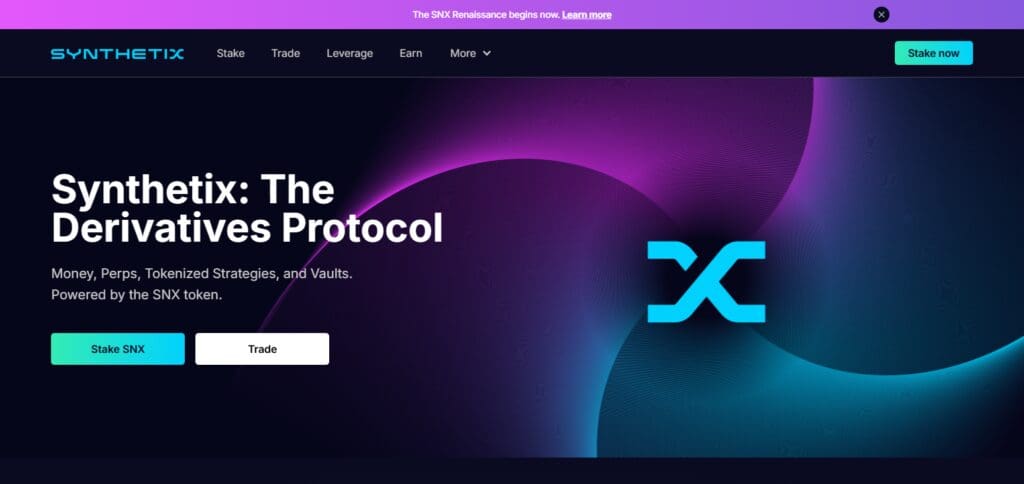
sUSD is widely used in the Synthetix ecosystem, supporting trading, derivatives, and liquidity provisioning in DeFi.
A valueable stable asset is characterized by its decentralized features and interoperability with different DeFi protocols.
sUSD (Synthetix)
- Peg: 1 USD
- Collateral: SNX (Synthetix Network Token).
- Mechanism: Overcollateralized synthetic asset issuance.
- Blockchain: Ethereum.
- Key Feature: Part of the Synthetix ecosystem for synthetic assets.
7. USDN (Neutrino USD)
USDN is the first algorithm based stable coin that was created on the Waves block chain with the aim of being supported by tokens ‘WAVES’.
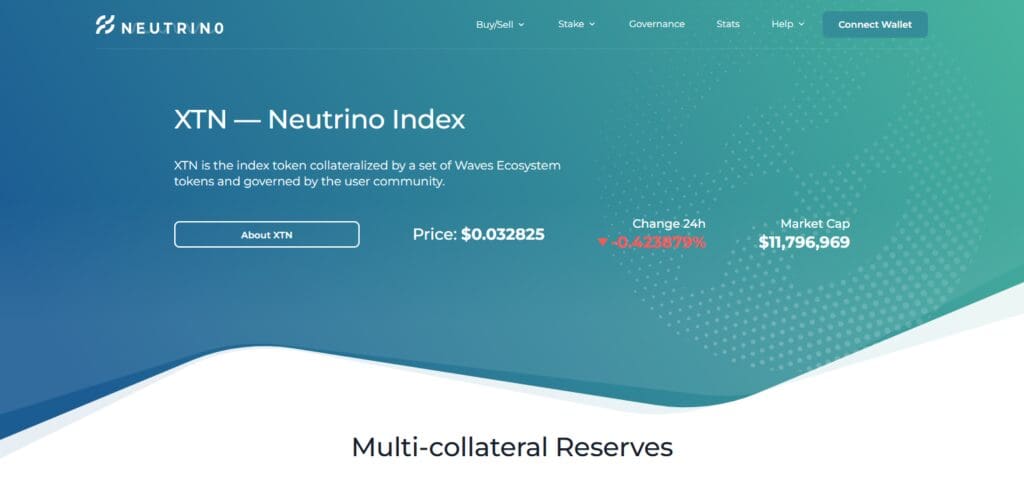
Unfortunately, it went into a downward spiral and faced a string of depegging issues which put the coins structural integrity on the line.
As a consequence of being intended for staking and DeFi’s, declaring the US currency backed on the token gave rise to an uncontrollable storm of fluctuations.
USDN (Neutrino USD)
- Peg: 1 USD
- Collateral: WAVES (Waves blockchain token).
- Mechanism: Algorithmic and collateral-backed.
- Blockchain: Waves.
- Key Feature: Native to the Waves ecosystem.
8. RAI (Reflexer Labs)
With RAI, Reflexer Labs was able to hover above and forward the tune of ETH as it was the first un-pegged asset.
As other stablecoins fixated onto the US dollar as a crutch to bind them, RAI employs an automated mechanism that recalibrates the redemption price to maintain balance.
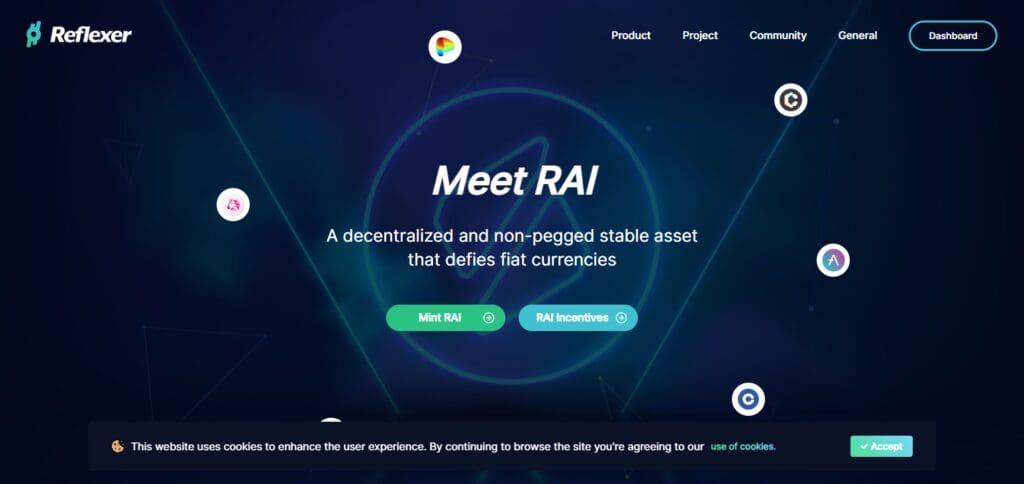
Utilizing this structure bestows a truly dynamic alternative to surveil reign unchecked by fiat backed reserves.
For DeFi applications that desire a more liquid asset without direct USD convertibility, RAI is a perfect fit.
RAI (Reflexer Labs)
- Peg: Non-USD (floating peg based on market demand).
- Collateral: ETH-backed.
- Mechanism: Non-pegged stable asset with minimal governance.
- Blockchain: Ethereum.
- Key Feature: Focuses on stability without a fixed peg.
Features of Decentralized Stablecoins
With the advancement of technology, decentralized stablecoins seem to be gaining a lot of benefits from the following:
Visibility: Decentralized stablecoins enjoy enhanced visibility since they are operated on public blockchains – meaning every person is capable of viewing every transaction which pertains to the reserves in real-time.
Decentralized Administration: All of these users are served with decentralized protocols and governance structures which improves the risk levels associated with single point of failure.
Algorithmic Stability: Unlike reserved stabled coins, the majority of decentralized stablecoins tend to uphold their value with algorithmic models.
Cross-Platform Use: This feature increases functionality and the possibility of fully using the stablecoin across a wide range of DeFi platforms.
Conclusion
Stablecoins built on decentralized structures are important to the crypto ecosystem because they provide stability without having to depend on a centralized authority.
While RAI provides a non-pegged stabilization method, DAI, FRAX, and sUSD offer dependable, overcollateralized models.
The risks posed by algorithmic stablecoins like USTC and USDN have been demonstrated.
As DeFi matures, powerful, truly decentralized stablecoins are the ones that will enable financial sovereignty with crypto capitalism.



